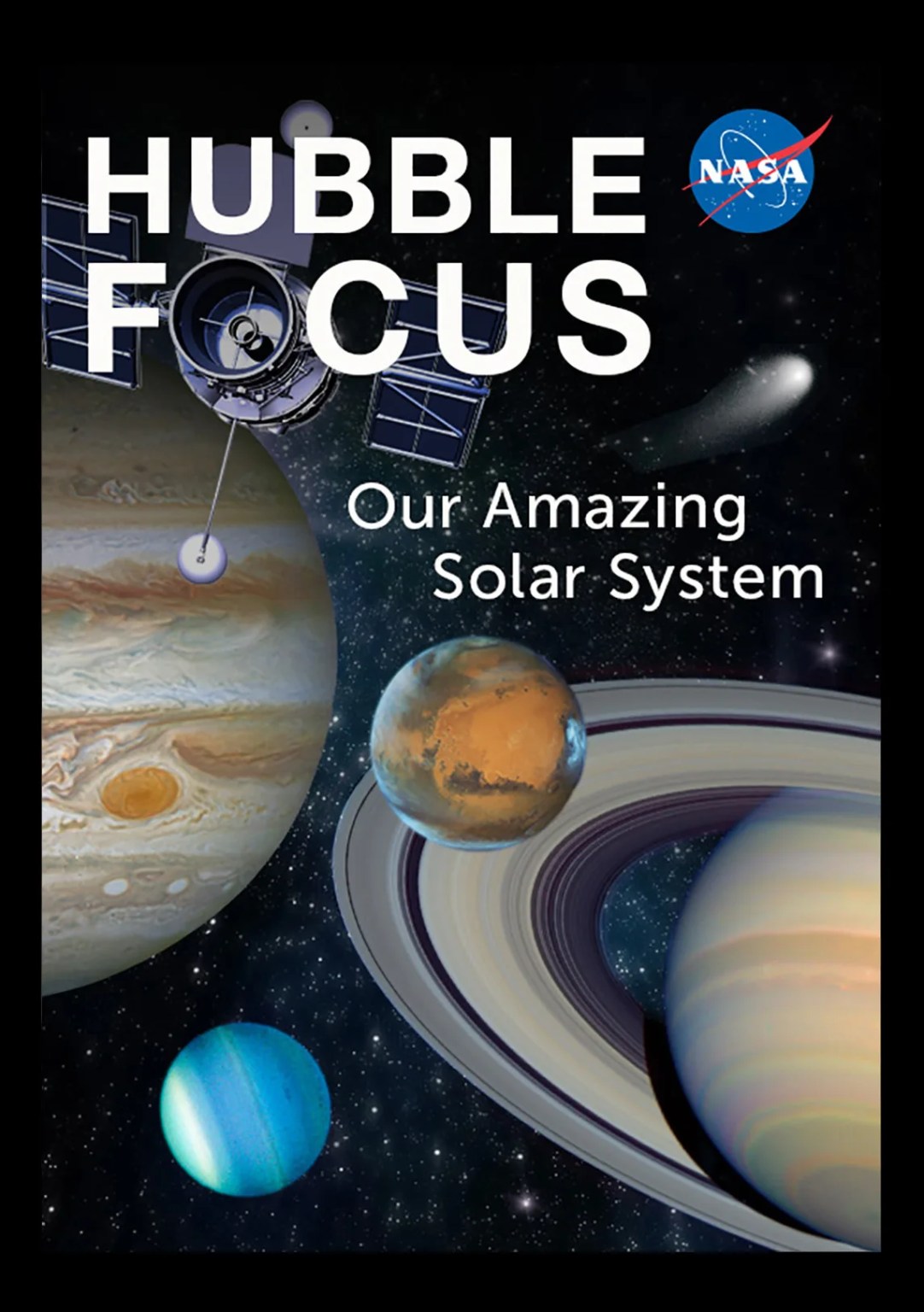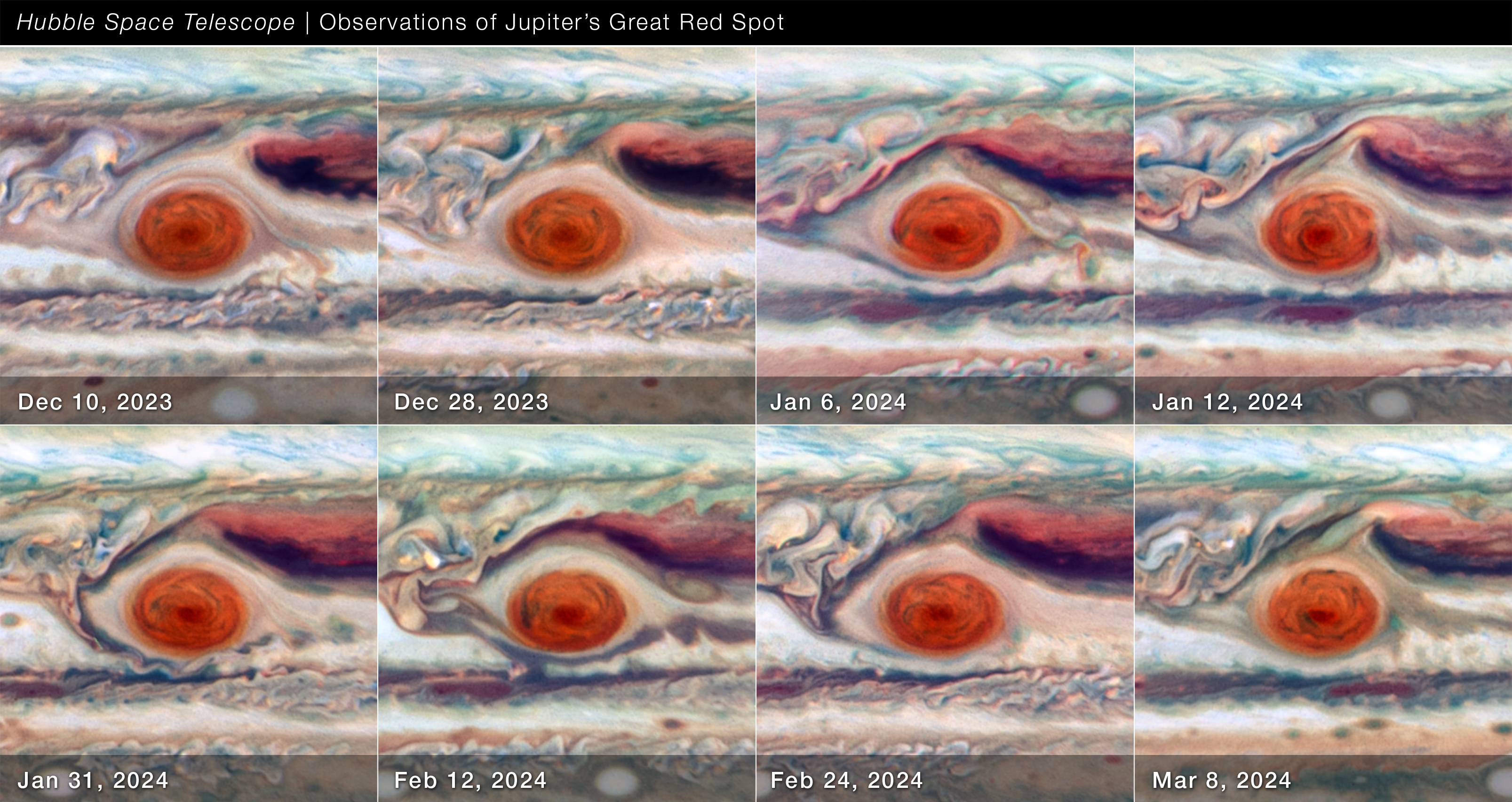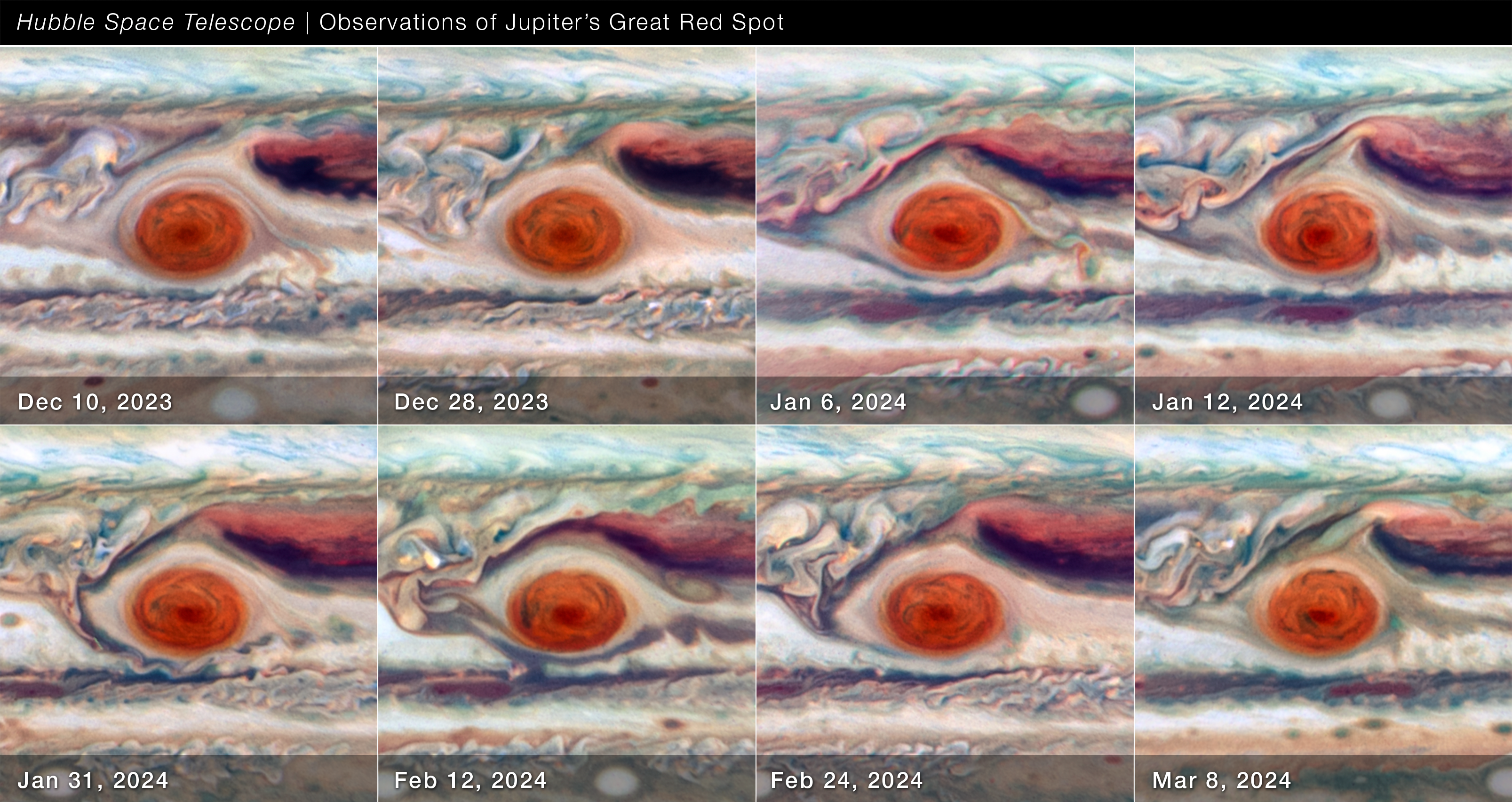Hubble Space Telescope Home NASA’s Hubble Watches… Missions Hubble Home Overview About Hubble The History of Hubble Hubble Timeline Why Have a Telescope in Space? Hubble by the Numbers At the Museum FAQs Impact & Benefits Hubble’s Impact & Benefits Science Impacts Cultural Impact Technology Benefits Impact on Human Spaceflight Astro Community Impacts Science Hubble Science Science Themes Science Highlights Science Behind Discoveries Hubble’s Partners in Science Universe Uncovered Explore the Night Sky Observatory Hubble Observatory Hubble Design Mission Operations Missions to Hubble Hubble vs Webb Team Hubble Team Career Aspirations Hubble Astronauts News Hubble News Hubble News Archive Social Media Media Resources Multimedia Multimedia Images Videos Sonifications Podcasts E-books Lithographs Fact Sheets Glossary Posters Hubble on the NASA App More Online Activities 4 Min Read NASA’s Hubble Watches Jupiter’s Great Red Spot Behave Like a Stress Ball 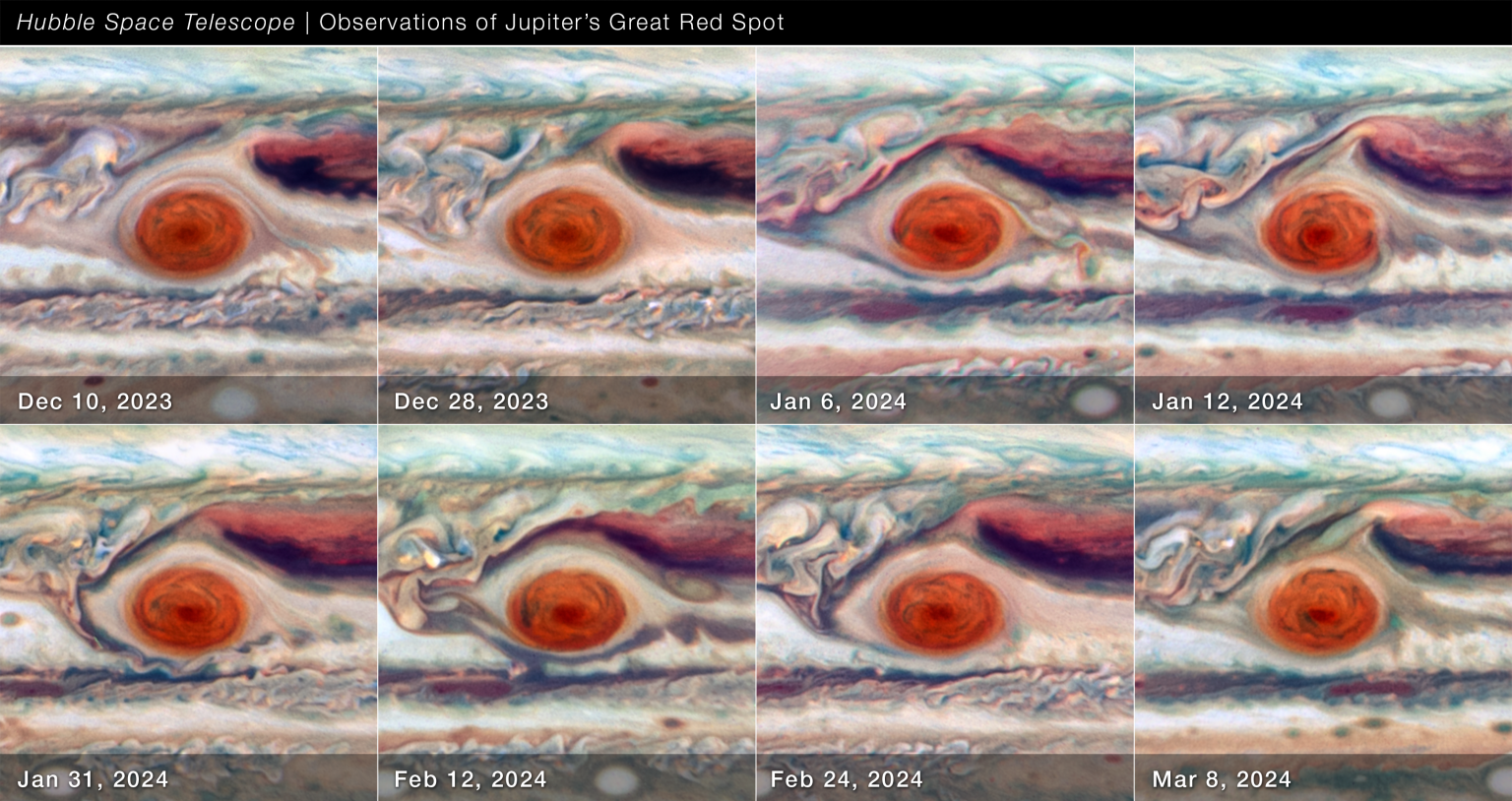 Hubble Space Telescope data of Jupiter’s Great Red Spot spanning approximately 90 days. Credits:
Hubble Space Telescope data of Jupiter’s Great Red Spot spanning approximately 90 days. Credits:
NASA, ESA, Amy Simon (NASA-GSFC); Image Processing: Joseph DePasquale (STScI) Astronomers have observed Jupiter’s legendary Great Red Spot (GRS), an anticyclone large enough to swallow Earth, for at least 150 years. But there are always new surprises – especially when NASA’s Hubble Space Telescope takes a close-up look at it.
Hubble’s new observations of the famous red storm, collected 90 days between December 2023 to March 2024, reveal that the GRS is not as stable as it might look. The recent data show the GRS jiggling like a bowl of gelatin. The combined Hubble images allowed astronomers to assemble a time-lapse movie of the squiggly behavior of the GRS.
To view this video please enable JavaScript, and consider upgrading to a web browser that
supports HTML5 video
This time-lapse movie is assembled from Hubble Space Telescope observations spanning approximately 90 days (between December 2023 and March 2024) when the giant planet Jupiter ranged from 391 million to 512 million miles from the Sun. Astronomers measured the Great Red Spot’s size, shape, brightness, color, and vorticity over a full oscillation cycle. The data reveal that the Great Red Spot is not as stable as it might look. It was observed going through an oscillation in its elliptical shape, jiggling like a bowl of gelatin. The cause of the 90-day oscillation is unknown. NASA, ESA, Amy Simon (NASA-GSFC); Video: Joseph DePasquale (STScI)
Download this video
“While we knew its motion varies slightly in its longitude, we didn’t expect to see the size oscillate. As far as we know, it’s not been identified before,” said Amy Simon of NASA’s Goddard Space Flight Center in Greenbelt, Maryland, lead author of the science paper published in The Planetary Science Journal. “This is really the first time we’ve had the proper imaging cadence of the GRS. With Hubble’s high resolution we can say that the GRS is definitively squeezing in and out at the same time as it moves faster and slower. That was very unexpected, and at present there are no hydrodynamic explanations.”
Hubble monitors Jupiter and the other outer solar system planets every year through the Outer Planet Atmospheres Legacy program (OPAL) led by Simon, but these observations were from a program dedicated to the GRS. Understanding the mechanisms of the largest storms in the solar system puts the theory of hurricanes on Earth into a broader cosmic context, which might be applied to better understanding the meteorology on planets around other stars.
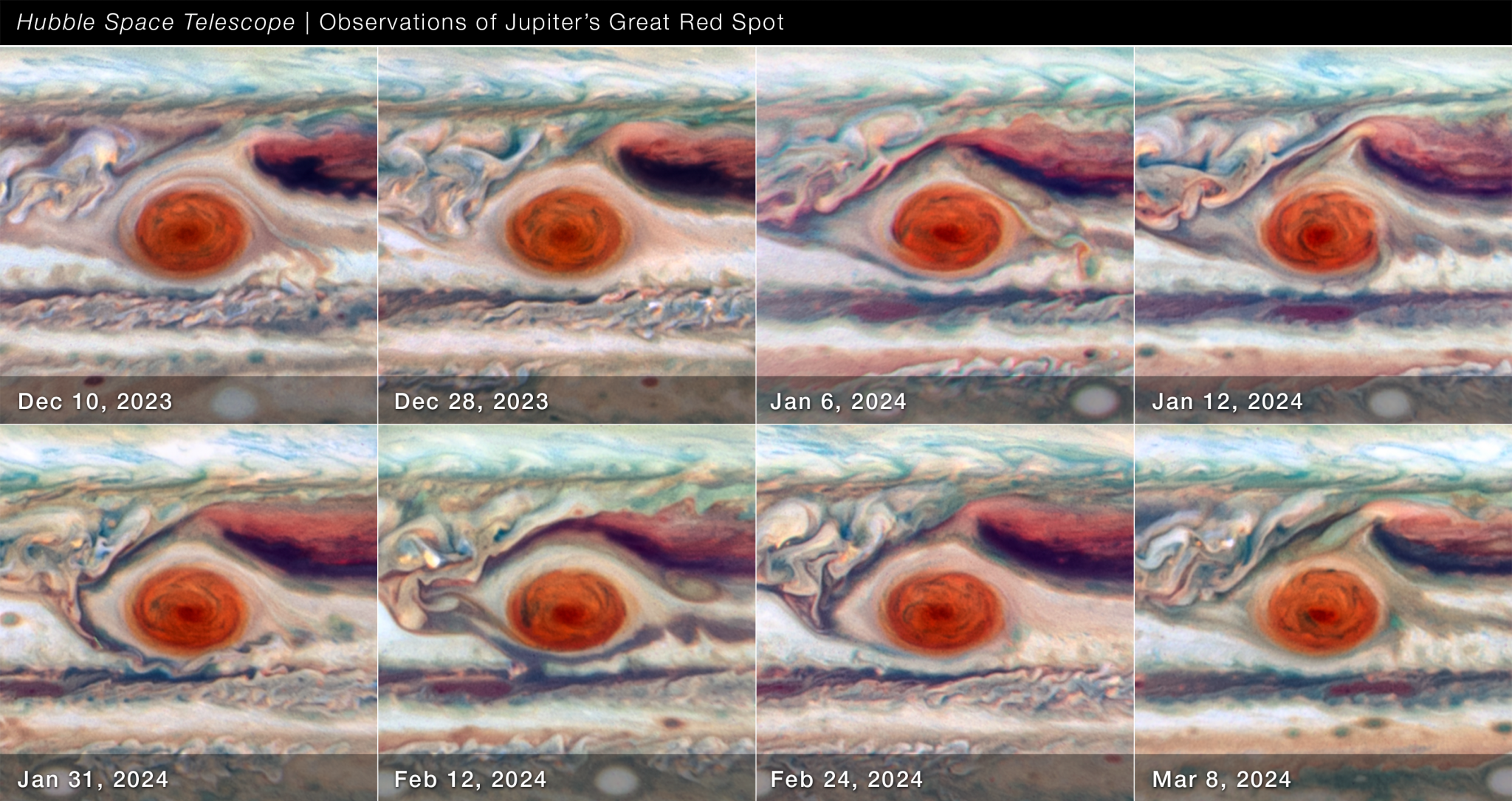 Using Hubble Space Telescope data spanning approximately 90 days (between December 2023 and March 2024) when the giant planet Jupiter ranged from 391 million to 512 million miles from the Sun, astronomers measured the Great Red Spot’s size, shape, brightness, color, and vorticity over one full oscillation cycle. The data reveal that the Great Red Spot is not as stable as it might look. It was observed going through an oscillation in its elliptical shape, jiggling like a bowl of gelatin. The cause of the 90-day oscillation is unknown. NASA, ESA, Amy Simon (NASA-GSFC); Image Processing: Joseph DePasquale (STScI)
Using Hubble Space Telescope data spanning approximately 90 days (between December 2023 and March 2024) when the giant planet Jupiter ranged from 391 million to 512 million miles from the Sun, astronomers measured the Great Red Spot’s size, shape, brightness, color, and vorticity over one full oscillation cycle. The data reveal that the Great Red Spot is not as stable as it might look. It was observed going through an oscillation in its elliptical shape, jiggling like a bowl of gelatin. The cause of the 90-day oscillation is unknown. NASA, ESA, Amy Simon (NASA-GSFC); Image Processing: Joseph DePasquale (STScI)
Download this image
Simon’s team used Hubble to zoom in on the GRS for a detailed look at its size, shape, and any subtle color changes. “When we look closely, we see a lot of things are changing from day to day,” said Simon. This includes ultraviolet-light observations showing that the distinct core of the storm gets brightest when the GRS is at its largest size in its oscillation cycle. This indicates less haze absorption in the upper atmosphere.
“As it accelerates and decelerates, the GRS is pushing against the windy jet streams to the north and south of it,” said co-investigator Mike Wong of the University of California at Berkeley. “It’s similar to a sandwich where the slices of bread are forced to bulge out when there’s too much filling in the middle.” Wong contrasted this to Neptune, where dark spots can drift wildly in latitude without strong jet streams to hold them in place. Jupiter’s Great Red Spot has been held at a southern latitude, trapped between the jet streams, for the extent of Earth-bound telescopic observations.
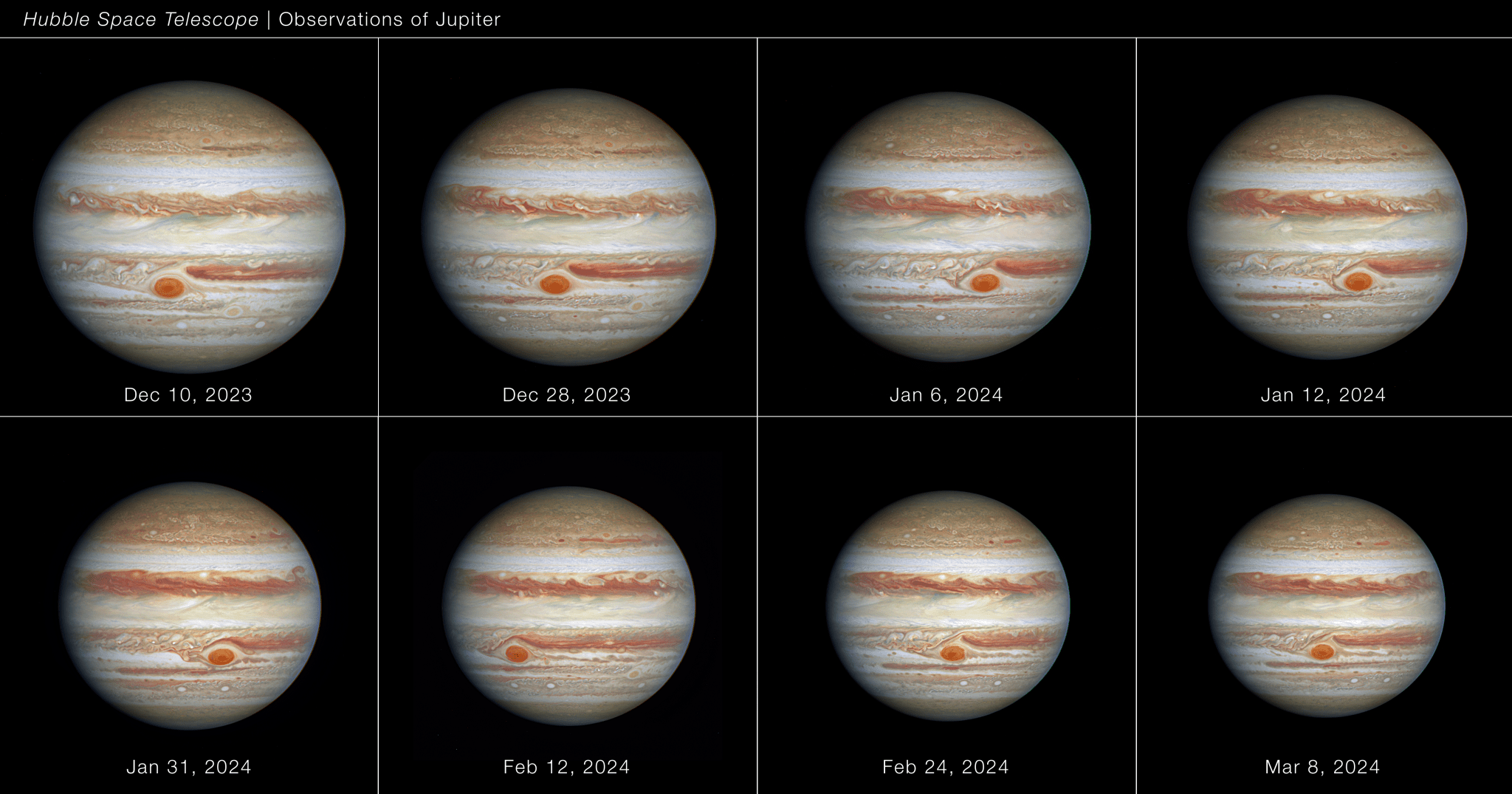 Using Hubble Space Telescope data spanning approximately 90 days (between December 2023 and March 2024) when the giant planet Jupiter ranged from 391 million to 512 million miles from the Sun, astronomers measured the Great Red Spot’s size, shape, brightness, color, and vorticity over a full oscillation cycle. The data reveal that the Great Red Spot is not as stable as it might look. It was observed going through an oscillation in its elliptical shape, jiggling like a bowl of gelatin. The cause of the 90-day oscillation is unknown. The observation is part of the observing programs led by Amy Simon of NASA’s Goddard Space Flight Center in Greenbelt, Maryland. NASA, ESA, STScI, Amy Simon (NASA-GSFC); Image Processing: Joseph DePasquale (STScI)
Using Hubble Space Telescope data spanning approximately 90 days (between December 2023 and March 2024) when the giant planet Jupiter ranged from 391 million to 512 million miles from the Sun, astronomers measured the Great Red Spot’s size, shape, brightness, color, and vorticity over a full oscillation cycle. The data reveal that the Great Red Spot is not as stable as it might look. It was observed going through an oscillation in its elliptical shape, jiggling like a bowl of gelatin. The cause of the 90-day oscillation is unknown. The observation is part of the observing programs led by Amy Simon of NASA’s Goddard Space Flight Center in Greenbelt, Maryland. NASA, ESA, STScI, Amy Simon (NASA-GSFC); Image Processing: Joseph DePasquale (STScI)
Download this image
The team has continued watching the GRS shrink since the OPAL program began 10 years ago. They predict it will keep shrinking before taking on a stable, less-elongated, shape. “Right now it’s over-filling its latitude band relative to the wind field. Once it shrinks inside that band the winds will really be holding it in place,” said Simon. The team predicts that the GRS will probably stabilize in size, but for now Hubble only observed it for one oscillation cycle.
The researchers hope that in the future other high-resolution images from Hubble might identify other Jovian parameters that indicate the underlying cause of the oscillation.
The results are being presented at the 56th annual meeting of the American Astronomical Society Division for Planetary Sciences, in Boise, Idaho.
Jupiter’s iconic Great Red Spot, a storm larger than Earth, has fascinated astronomers for over 150 years. But thanks to NASA’s Hubble Space Telescope, we’re now seeing this legendary storm in a whole new light. Recent observations show that the Great Red Spot is wobbling and fluctuating in size.
NASA’s Goddard Space Flight Center; Lead Producer: Paul Morris The Hubble Space Telescope has been operating for over three decades and continues to make ground-breaking discoveries that shape our fundamental understanding of the universe. Hubble is a project of international cooperation between NASA and ESA (European Space Agency). NASA’s Goddard Space Flight Center in Greenbelt, Maryland, manages the telescope and mission operations. Lockheed Martin Space, based in Denver, Colorado, also supports mission operations at Goddard. The Space Telescope Science Institute in Baltimore, Maryland, which is operated by the Association of Universities for Research in Astronomy, conducts Hubble science operations for NASA.
Learn More
Hubble Shows Winds in Jupiter’s Great Red Spot Are Speeding Up
Telescopes and Spacecraft Join Forces to Probe Deep into Jupiter’s Atmosphere
Hubble’s Grand Tour of the Outer Solar System
Facebook logo @NASAHubble @NASAHubble Instagram logo @NASAHubble Media Contacts:
Claire Andreoli
NASA’s Goddard Space Flight Center, Greenbelt, MD
claire.andreoli@nasa.gov
Ray Villard
Space Telescope Science Institute, Baltimore, MD
Science Contacts:
Amy Simon
NASA Goddard Space Flight Center, Greenbelt, MD
Michael H. Wong
University of California, Berkeley, Berkeley, CA
Details Last Updated Oct 09, 2024 Editor Andrea Gianopoulos Location NASA Goddard Space Flight Center Related Terms Astrophysics Division Goddard Space Flight Center Hubble Space Telescope Jupiter Missions Planetary Science Planets The Solar System
Keep Exploring Discover More Topics From Hubble Hubble Space Telescope
Since its 1990 launch, the Hubble Space Telescope has changed our fundamental understanding of the universe.

Studying the Outer Planets and Moons
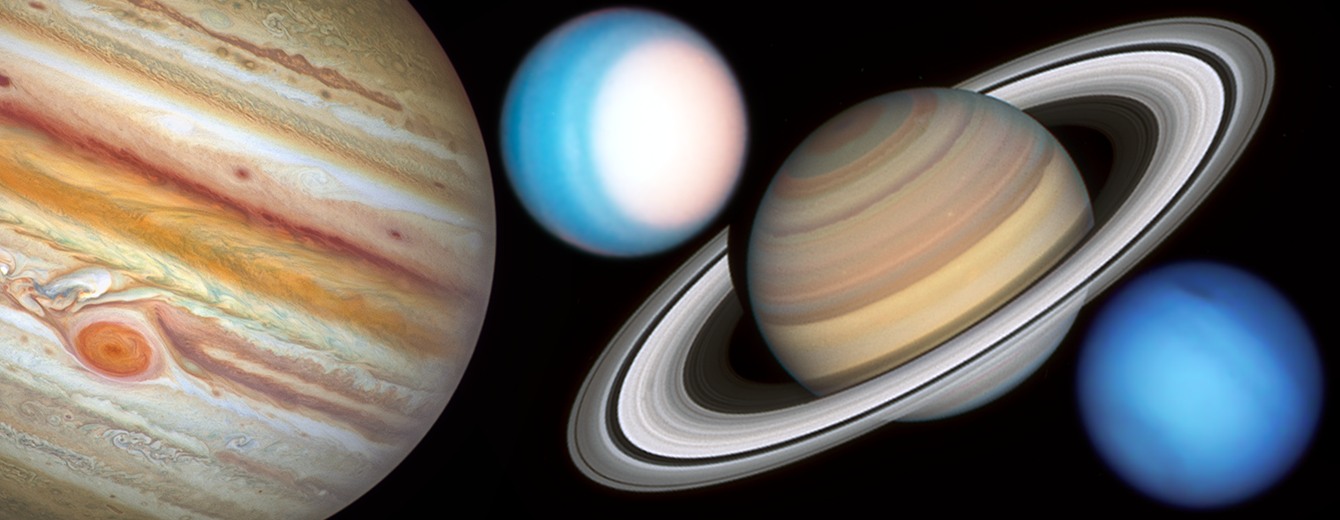
Hubble Focus: Our Amazing Solar System
Studying the cosmos for over a quarter century, the Hubble Space Telescope has made more than a million observations and…
